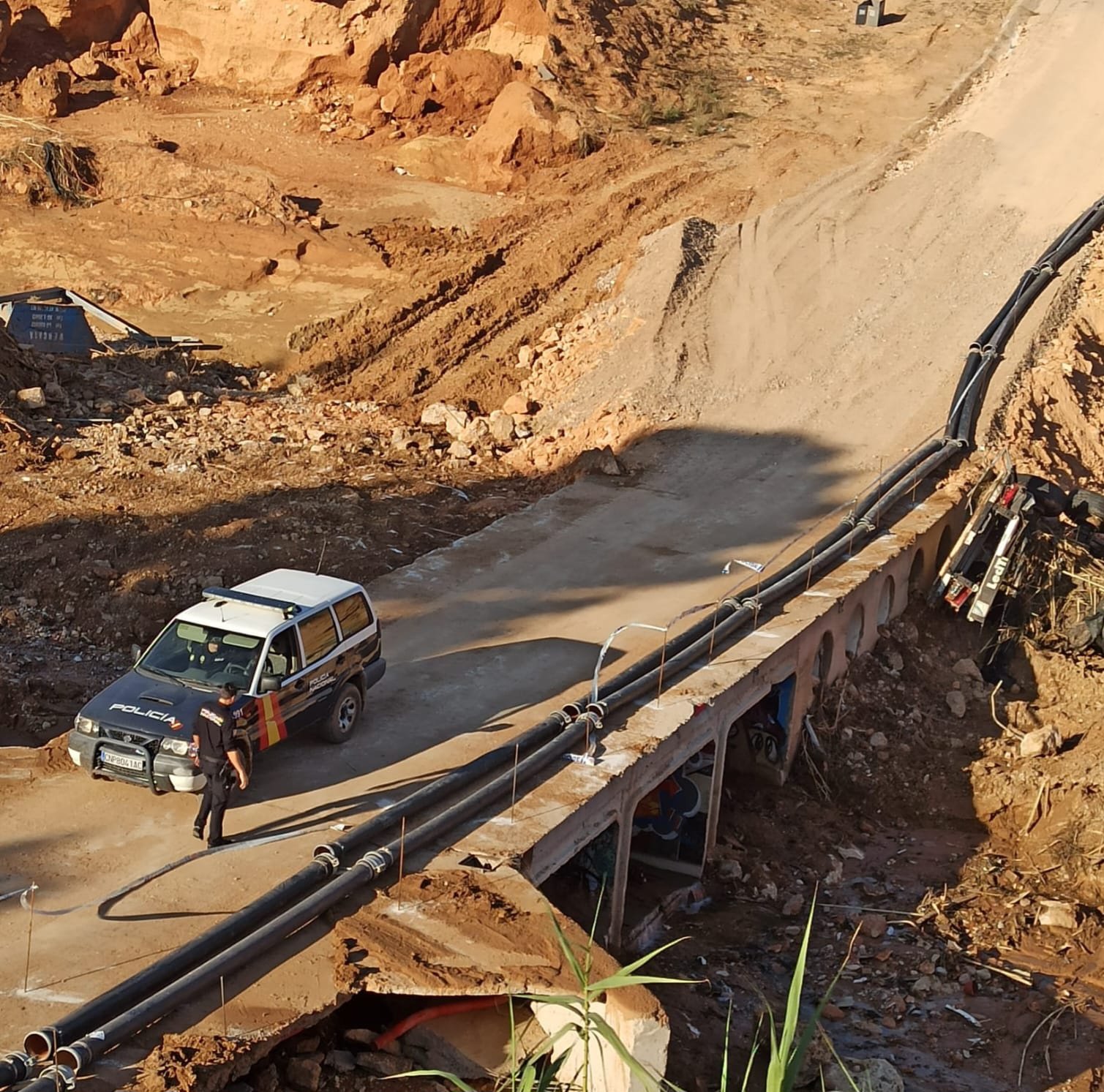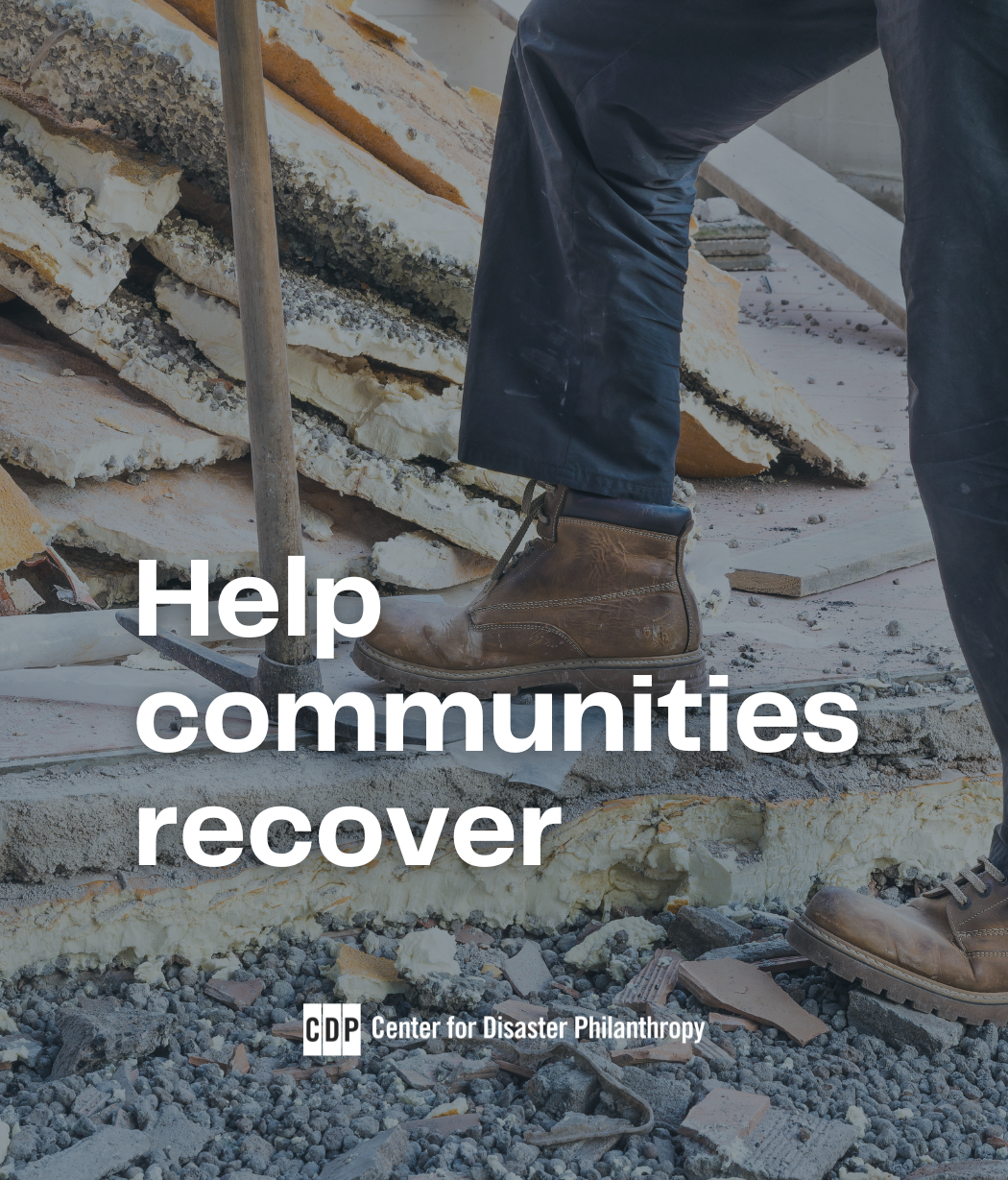What we’re watching: Weekly disaster update, November 4

We know all too well that disaster can strike anytime, anywhere in the world. Some disasters make headlines; others do not. Here at the Center for Disaster Philanthropy (CDP), we monitor the status of disasters worldwide and compile a list of the ones we’re tracking weekly, along with relevant disaster-related media coverage.
Here’s what we’re watching for the week of Nov. 4, 2024.
New or Emerging Disasters
Flooding – Spain: On Oct. 29, Spain saw its worst disaster in decades. Heavy rains in Malaga and Valencia caused such severe flooding that 214 people died, a number that is expected to rise in the coming days since dozens of people are still missing.
Explosive downpours caused violent deluges in city streets within minutes, trapping people on roads and in the lower levels of buildings. Water rose as high as 9 feet. Cars piled up on highways, and a high-speed train derailed. The storm even spurred a rare tornado and hailstorm. The water could not penetrate dry ground after a two-year drought in Spain, which exacerbated the flooding.
The Prime Minister ordered 5,000 more troops and 5,000 more police officers to the region, bringing the total to almost 12,000, the largest deployment in peacetime.
Check out CDP’s 2024 Europe Floods profile to learn more about European floods.
Tornado Outbreak – Oklahoma: At least 11 people were injured as six tornadoes were confirmed in an overnight tornado outbreak on Nov. 3 in Oklahoma City. Local officials reported on Sunday afternoon that 43 businesses and residences had suffered major damage, 39 were destroyed and 54 had only minor damage.
As of 11:30 a.m. EST on Nov. 4, approximately 9,000 customers remained without power.
To learn more about tornadoes in the United States this year, see CDP’s 2024 U.S. Tornadoes disaster profile.
Super Typhoon Kong Rey – Taiwan/China/Japan: At least three people were killed and 515 were injured when the most powerful cyclone in thirty years hit Taiwan on Oct. 31.
Thousands of people were evacuated, hundreds of flights were grounded, and schools and offices were closed. Typhoon Kong-Rey produced winds of 109 mph, the equivalent of a strong Category 2 hurricane.
After leaving Taiwan, the storm moved into China, where remnants brought record rainfall to eastern coastal communities, including Shanghai. It was expected to break 40-year-old November rainfall records. The weather system then moved into western Japan with several landfalls and then to eastern Japan, where it was expected to stay until Nov. 4. At least 200,000 people in Japan were told to evacuate.
Wildfires – United States: Multiple wildfires have popped up across the U.S. in the past couple of weeks.
- Since Oct. 21, Connecticut has faced 70 fires during an unusually dry October. The Hawthorne brush fire in Berlin was caused by a campfire and has burned over 127 acres. It is particularly difficult to contain as leaves from surrounding trees keep falling, rekindling already burned areas. One firefighter died last week.
- Numerous fires burned in Pennsylvania over the first weekend in November. This included one on Blue Mountain near the Lehigh Gap in Northampton County that had burned 150 acres as of Nov. 3. Several fires triggered by drought were burning through south-central Pennsylvania in Lancaster and Franklin counties. There were also several blazes in western PA on Halloween.
- A fire known as the Halloween Fire started around noon in Downe Township in Cumberland County, New Jersey. By Nov. 3, it had grown to 120 acres but was 75% contained. On Nov. 1, there was a large fire in Northern NJ in Morris County.
To learn more about wildfires, see CDP’s 2024 North American Wildfires profile.
Previous/Ongoing Disasters
Tropical Storm Trami – The Philippines: At least 130 people have died, and 30 are still missing in the Philippines after Tropical Storm Trami made landfall on Oct. 25. More than 150,000 people evacuated, and at least 75,000 are now displaced, with landslides and flooding causing severe damage to villages.
Hurricane Helene – North Carolina: Nearly a month after Hurricane Helene caused over 230 deaths across six states, Asheville, North Carolina, is still recovering. Local businesses face long-term economic challenges. Tourism — a significant revenue source — has been severely curtailed, and efforts are underway to secure aid from FEMA to help sustain small businesses.
Water in Asheville was finally restored a week ago, but residents are still under a boil advisory. Rebuilding efforts post-storm are difficult given the new hurricane-resistant construction guidelines, along with delays in federal assistance.
“People are trying to go back in and rebuild and fix their houses, and now they’re being told they have to elevate it or they can’t build it at all,” said Ken Floyd, general manager of Monte Vista Hotel in Black Mountain North Carolina.
To learn more about Hurricane Helene, see CDP’s 2024 Atlantic Hurricane Season profile.
Complex Humanitarian Emergencies – Chad
Many places worldwide are experiencing emergencies caused by conflict, climate change, drought, famine, economic challenges and other conditions that combine to create a complex humanitarian emergency (CHE). CDP maintains complete profiles on several CHEs, and what CDP considers Level 1 CHEs are profiled in this weekly blog post and tracked.
On Oct. 30, 2024, Chad’s president, General Mahamat Idriss Déby, announced that he is personally leading a counter-operation against the terrorist group Boko Haram for its attack on a military base in the Lake Chad basin, killing 40 soldiers and wounding 37 others.
Chad’s post-independence history has been rocked by violence, with conflict between rebels in the north, a jihadist insurgency in the Sahel region, and instability between the Arab-Muslim North and Christian/animist south. Against this political backdrop, the country experiences chronic underdevelopment and poverty, widespread acute food insecurity, a health crisis, and an influx of refugees and returning migrants from neighboring Sudan.
Since the beginning of the conflict in Sudan on April 15, 2023, an estimated 910,000 people have crossed into Chad. Eighty-nine percent of registered people crossing the border into Chad are women and children.
Additionally, torrential rains over the summer and fall killed 576 people. They affected over 1.9 million in Chad, exacerbating the displacement crisis and worsening conditions for vulnerable refugee and returnee populations living in camps. Flooding has limited the humanitarian response in Chad after damaging roads, bridges and other infrastructure, making some sites inaccessible to the World Health Organization until after the rains. Currently, Chad is experiencing its first-ever outbreak of Dengue fever and is grappling with Hepatitis E, malnutrition, malaria and gastrointestinal illness inside displacement camps.
Between June 2024 and January 2025, the Famine Early Warning Systems Network (FEWS NET) projects that the eastern provinces along the border of Sudan will experience worsening food security outcomes.
FEWS NET says, “The steady influx of refugees and returning migrants is straining livelihoods and intensifying competition for the few available economic opportunities.”
In addition to the disasters listed above, we actively monitor the following disasters or humanitarian emergencies. For more information, see the relevant disaster profiles, which are updated regularly.
 Photo by Drew Beamer on Unsplash
Photo by Drew Beamer on Unsplash What We’re Reading
- Sudan’s ‘forgotten war’ – NPR: “The current humanitarian crisis in Sudan is seen as one of the worst in the world, but has little global attention. ‘They forget about us,’ one exhausted doctor said. ‘It’s a forgotten war.’” Listen to this episode of “Up First” on NPR.
- Editorial – The Guardian view on climate-linked disasters: Spain’s tragedy will not be the last – The Guardian: “Extreme weather in Spain, and the rest of southern Europe, is more commonly understood to mean dangerous heat, drought and wildfires. The regional government is under attack regarding the lack of sufficient warnings and there is no doubt that the severity of these floods came as a terrible shock. But in another sense, the events of the past week are part of a pattern. While the destruction is unprecedented, the analysis from climate scientists is familiar.”
- What is FEMA’s disaster relief fund? What you should know, why costs keep rising, and what we can do about it – The Equation: “Before the devastating Hurricanes Helene and Milton, NOAA estimated (as of September 10, 2024), that in 2024 there were 20 separate billion-dollar* climate change-related disasters that collectively contributed to the deaths of 149 people with a total economic cost of $53 billion.” (*CDP note: This number has grown to 24 as of October.)
A moment of calm…Beginning at noon PST on Nov. 5 until the polls close, The San Diego Zoo will livestream footage of its capybaras and penguins.

